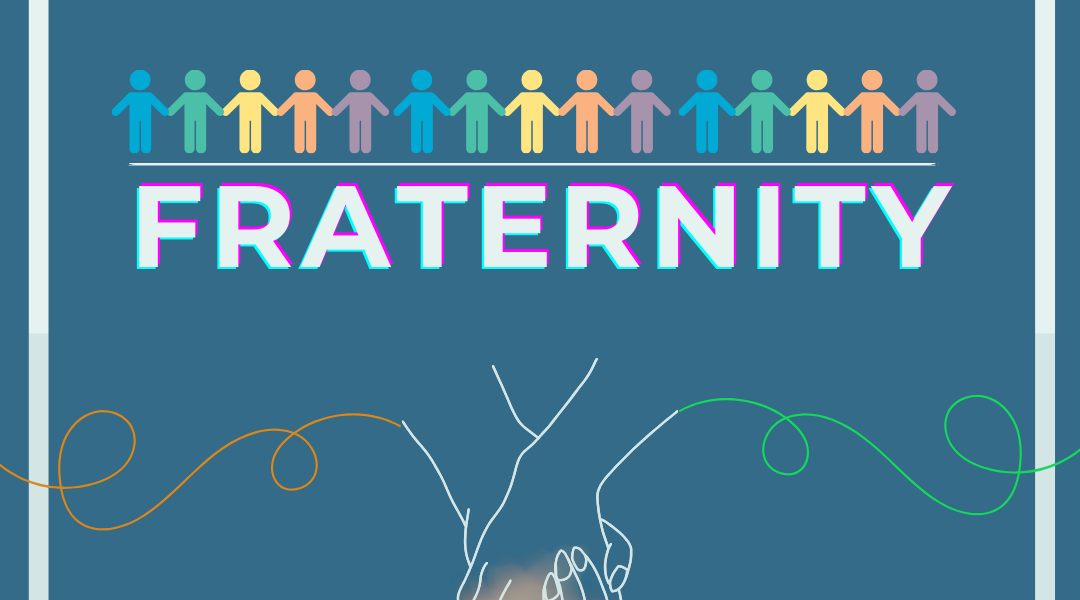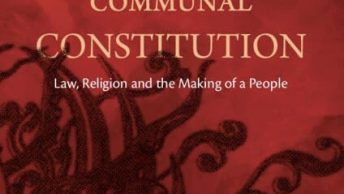Introduction
In the backdrop of the consecration of the Ram Mandir in Ayodhya by the Prime Minister with the full support of the Indian State, much ink has been spilt on examining and re-examining India’s constitutional commitments to secularism. However, inadequate attention has been paid to the clause on fraternity in the Constitution, that envisions a state that promotes brotherhood and social cohesion in the face of differences such as religious divisions. Despite its recognition as part of constitutional morality, it has largely been ignored in Indian constitutional thought.
In this chapter (forthcoming in the Cambridge Companion to the Indian Constitution), Farrah Ahmed presents a detailed examination of this ideal in Indian jurisprudence. Ahmed begins by tracing the constitutional and philosophical meanings given to the term fraternity. Secondly, she presents a thorough account of the complex relationship it shares with other important preambular values, especially dignity, equality, and liberty, and the widespread ramifications that different interpretations of this word can carry. Third, she reflects on the gendered way in which this term has been understood, drawing from Carole Pateman’s work on the social contract. She then concludes the chapter by noting how fraternity as a constitutional ideal can further social cohesion.
The Concept of Fraternity
Drawing from the Constituent Assembly debates and political philosophy, the chapter traces what the ideal of fraternity represents in the Indian Constitution. In this section, Ahmed draws out the three core elements that characterize fraternity. First, she examines the metaphor of “brotherhood”, “brotherly love” and familial ideals that are central in discussions surrounding fraternity. Second, she explains how fraternity often appears as a response to different religious, caste, and class identities, with a shared understanding that the state should ensure that different communities live in harmony. Adding nuance to this line of thinking, she further notes how fraternity sought to not only preserve some differences like religious or linguistic identities, but also meant to transcend others like untouchability. Lastly, Ahmed examines the different character traits, such as tolerance and generosity, that fraternity is associated with. Using this understanding of fraternity as the base, she further examines the complex interrelation that fraternity shares with different constitutional ideals.
Fraternity and Preambular Values
Beginning with the relationship between fraternity and equality, Ahmed notes how both Nehru and Ambedkar viewed fraternity and equality as harmonious ideals that stand in opposition to societal hierarchies such as caste hegemonies. However, she also traces the implicit hierarchies that fraternity continues to engender in constitutional thought. The characterization of scheduled castes and scheduled tribes as “younger brothers” with privileged classes as the “eldest brother” in the Constituent Assembly debates symbolizes this hierarchy. A similar characterization also informed the discussions surrounding the people belonging to Assam as younger brothers vis-à-vis their “elder brothers” from more “powerful” states. Drawing from this, Ahmed argues that rather than a commitment to the ideal of fraternity as understood in the previous section, these discussions reflect a broader commitment to a “hierarchical brotherhood” that continues to inform the decisions of the Apex Court.
She then considers the Supreme Court’s judgement in Indra Sawhney v. Union of India on the constitutionality of extending reservations to public employment. While recognizing the significance of fraternity for the issues presented before them, in response to questions of “merit”, the bench noted that the very notion of reservation “implies selection of a less meritorious person”, and that such “crutches cannot be provided throughout one’s career”. Ahmed notes how the underlying biases and prejudices which inform this language “express well the hierarchies preserved by fraternity in Indian constitutional discourse”.
The next section turns its attention to the relationship fraternity shares with ‘dignity’. It explores the contradictory, and convoluted ways in which this has been understood by jurisprudence in India. While the Preamble of the Constitution suggests that achieving fraternity assures dignity, judgments at times suggest the inverse—arguing that dignity assures fraternity. Other decisions, drawing from Article 51A of the Constitution, recognize fraternity as a duty owed by citizens to each other, and to the state as a guarantor of brotherhood. For instance, Navtej Singh Johar v. Union of India held that there was a constitutional duty on citizens to respect the dignity of others, and practice an attitude of “respect and reverence towards fellow men.” However, Ahmed argues that neither interpretation strictly follows from the constitutional text. Importantly, the danger of such a loose interpretation of fraternity, especially when interpreting the duties of citizens, is the well-founded risk of such duties being used to curtail the freedoms of citizens. Subramanian Swamy v. Union of India exemplifies this danger by suggesting that the responsibility and fundamental duty of citizens to mutually respect each other’s dignity is a precondition to fully enjoying constitutional rights.
Moreover, while liberty and fraternity are perceived as fundamental preambular values that mutually support each other, they also share a similarly peculiar relation. Generally, tolerant states and societies do not interfere with actions they disapprove of and are therefore viewed as guaranteeing liberty. However, Ahmed notes how tolerance in Indian constitutional thought has also been used to justify curtailments to liberty. This stems from understanding tolerance as a concept in opposition to religious proselytism. This, in turn, represents a broader feature of religious freedoms in India, which protects the freedom to propagate religion, but not the right to convert a person to one’s own religion. This conception of tolerance is argued to be predominantly rooted in the Hindu conception of religion, which is seen as a “nonproselytizing” religion, requiring protection against other “proselytizing faiths”. Thus, such a conception of tolerance often justifies the treatment of Muslims and Christian minorities as intolerant and aggressive, and, in turn, justifies restricting the liberty of citizens.
Ahmed also examines fraternity’s connection with values like ‘generosity’ in Indian constitutional thought. During the Assembly debates, fraternity was closely associated with the idea that we ought to focus on improving the lives of the worse off among us. This is reflected in the Apex Court’s ruling in TMA Pai Foundation v. Karnataka where the judges evoke the metaphor of “Mother India” to argue for greater protections for the most vulnerable. The logical corollary of this, as reflected in Nehru’s comments during the Constituent Assembly debates, is the need for generosity from majority communities. Ahmed examines that such a conception of fraternity as requiring the largesse of majorities furthers a narrative that while the Indian majority (read as Hindus) subjects itself to constitutional commitments, minorities have not fulfilled their end of the constitutional bargain.
She further notes how early jurisprudence, which supported an intrusive reform of Hinduism, also lent support to the strength of such an ideology. This includes courts taking for themselves the role of determining what they believe are “essential” religious practices, and explicitly acknowledging their proactive willingness to intervene in Hindu practices and doctrines as opposed to those of minorities. Additionally, the selective interference of courts when it comes to personal laws and the reluctance of the state to develop a uniform civil code despite the constitutional mandates is further taken as an indicator of an over-indulged minority, even as the Hindu majority is subject to strict constitutional constraints. Notwithstanding the truth of such a narrative (which Ahmed rightly notes bears little resemblance with reality where Muslims lack political, economic or social capital), the underlying argument is that the perception of fraternity as requiring the magnanimous generosity of the majority has further harmed the worse off. It breeds resentment against religious minorities for being excessively indulged by the state even as they are subject to discrimination and oppression.
The Gendered Connotations of Fraternity
Lastly, the article reflects on the gendered language of fraternity. Drawing from Carole Pateman’s of the social contract theory for invisiblizing women from the social contract by not considering them as contractual parties, Ahmed argues that the lack of women’s representation in the Assembly constitutes a similar ignorance of women’s roles. Moreover, she also uses Pateman’s critique of fraternity in ensuring the “law of male sex-right”, i.e., an understanding among men that their shared interest lies in the subordination and use of women’s bodies. Consequently, they argue for the preservation of personal laws on grounds of community consent and this inevitably leads to the curtailment of women’s liberties. Additionally, Article 51A’s clause on fraternity enshrines a duty to “promote harmony and spirit of common brotherhood” and “renounce practices derogatory to the dignity of women”. While these two represent distinct duties, Ahmed argues that their inclusion in the same clause (in line with the preambular text which connects fraternity to dignity) could perhaps be explained as an attempt to achieve an ideal of fraternity without the exploitation of women.
The discussion on fraternity in the Indian constitutional jurisprudence has been a subject of neglect. However, it holds immense promise as a constitutional ideal which can hold the state accountable when its actions threaten the common brotherhood and fraternal relations among different communities. Especially in the current context, where hostility and intolerance towards minorities have been on a steady climb, both in India and globally, greater attention to this concept is necessary.
Saranya Ravindran is a fourth year student at NALSAR University of Law, and an editor at Law and Other Things.
Editorial Note :-This Discussion was coordinated and edited by Vishnu Bandarupalli and published by Abhishek Sanjay from the technical team of the Student Editorial Team






yqhvck
p2z89z
xy540n
o43ef6